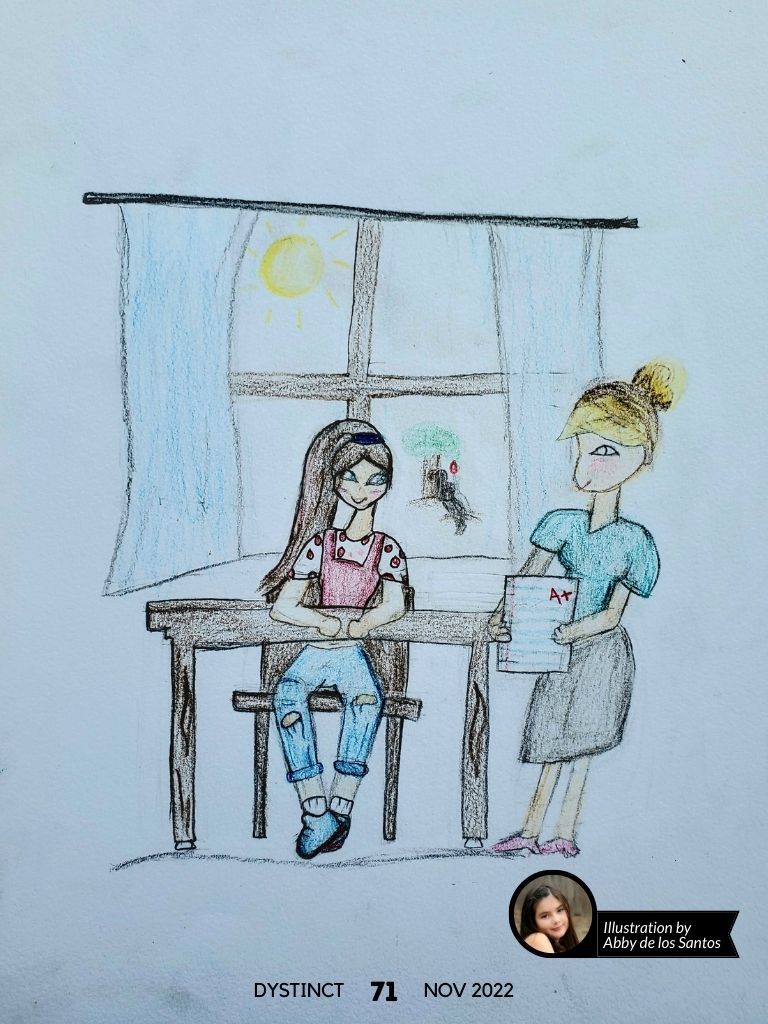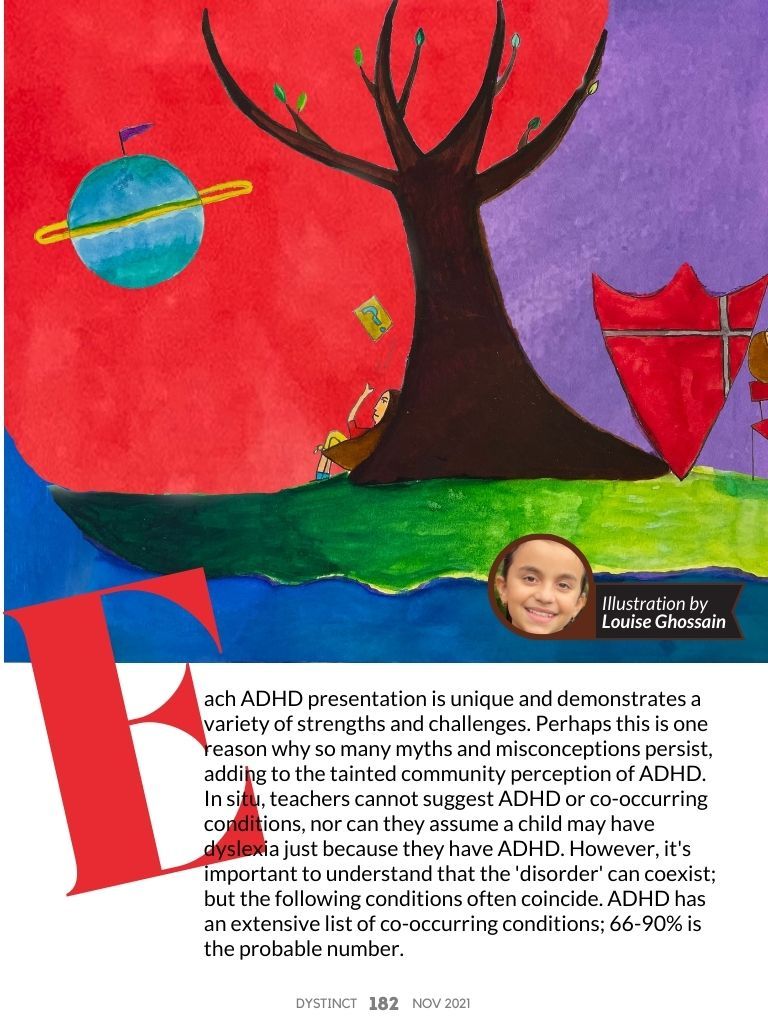
DYSTINCT Book III : Illustration Callout for Coffee Table Book
Illustration opportunities for the upcoming Annual Coffee Table Dystinct Book III. Submission Deadline 25 June 2023.
Table of Contents
Instructions to submit the illustrations are at the bottom. If you have any questions, please get in touch with me at hello@dystinct.org.
Callout 1 - Teacher pushing a boulder labelled SOR
- Article Topic: 10 Ways to Incorporate the Science of Reading into the Balanced Literacy Classroom
- Article Context: This article provides ten creative ideas for educators to incorporate the Science of Reading into their classroom routines that can have a big impact on student growth.
- Illustration Theme: The education system is at a tipping point
Illustration Guideline:
- Children can feel free to create an illustration as per their creativity.
- If you require a guideline, you can create an illustration of a teacher pushing a boulder labelled SOR and standing on the top of the mountain ready to roll it down to a waiting crowd of happy children.
Callout 2 - Brain sown in a pot and shoots growing from it
- Article Topic: Dyslexia - How to best reduce anxiety and lift self-esteem
- Article Context: This article discusses how children with dyslexia are susceptible to low self-esteem and anxiety and how schools can ensure that their staff are trained to spot this and provide simple adjustments to alleviate it.
- Illustration Theme: Growth mindset
Illustration Guideline:
- Children can feel free to create an illustration as per their creativity. If you require a guideline, you can create an illustration of a brain sown in a pot and shoots growing from it.
Callout 3 - Waiting to be interviewed
- Article Topic: Top tips for Job Hunting
- Article Context: This article discusses job hunting tips for neurodiverse individuals based on the strategies that he has found helpful in all his years of jobhunting and being a neurodiversity advocate helping organisations streamline their process of recruiting neurodiverse employees.
- Illustration Theme: Neurodiverse people in the workforce
Illustration Guideline:
- Children can feel free to create an illustration as per their creativity.
- If you require a guideline, you can draw a picture of 10 employees, all plain white from head to shoes waiting to be interviewed. 2 of the employees can be drawn with a colourful head indicating neurodiverse people.
Callout 4 - Traumatised
- Article Topic: Compassion Gravity
- Article Context: This article discusses how parents need to let go of their self-limiting feelings of shame and guilt to be able to help their children.
- Illustration Theme: Traumatised parents letting go of the feelings of shame/hiding/self-limiting belief/fear/anger, so they are prepared to show empathy to their children who are going through the same struggles as they did in the past.
Illustration Guideline:
- Three illustrations are required for this article. You can choose any one or all three:
Illustration 1: A drawing of a mother and child standing facing each other in a circular field of energy emanating from the mother enveloping them both. There is a heart drawn near the mother with words such as shame, hiding, self-limiting beliefs, fear, anger crossed out to show that the mother has let go of these negative feelings.
Illustration 2: An adult female holding a bottle of antidote titled, “compassion and loving awareness” in their hand, riding a horse into the past reaching out to their 8-year-old self.
Illustration 3: A 6-year-old girl with a loose tooth who is trying to wiggle it with her tongue.
Callout 5 - Using Children's books
- Article Topic: Using Children's Literature as a Low-Stress Way to Study Words
- Article Context: This article discusses how educators and parents can get children actively involved in word study through the use of children's literature and provides practical advice on building children's curiosity and knowledge of words to develop their reading and spelling skills.
- Illustration Theme: Word study using children’s books
Illustration Guideline:
- Children can feel free to create an illustration as per their creativity.
- If you require a guideline, you can draw a picture of a child and adult reading a book together.
Callout 6 - Literacy instruction to phonemes
- Article Topic: Then and Now: How Linguistic Phonics and EBLI have transformed my literacy instruction
- Article Context: The article describes the various elements of EBLI instruction and how adopting a shift from print-to-speech to speech-print orientation has made a significant difference in her students' acquisition of foundational reading and spelling skills.
- Illustration Theme: Anchoring literacy instruction to phonemes
Illustration Guideline:
- This article requires a drawing of a child holding a whiteboard and saying words like tap, pan and tin. The words then disintegrate into individual alphabets' s' 'a' 't' 'p' 'i' 'n' with a little anchor attached to each alphabet and fall onto the whiteboard.
Callout 7 - Two sides of the same coin
- Article Topic: Then and Now: How Linguistic Phonics and EBLI have transformed my literacy instruction
- Article Context: The article describes the various elements of EBLI instruction and how adopting a shift from print-to-speech to speech-print orientation has made a significant difference in her students' acquisition of foundational reading and spelling skills.
- Illustration Theme: Reading and spelling are two sides of the same coin
Illustration Guideline:
- Children can feel free to create an illustration as per their creativity.
- If you require a guideline, you can draw a picture of a child with their teacher and a coin with "reading" and "spelling" written on either side being flipped.
Callout 8 - Sight Words
- Article Topic: Will the Real Sight Word Please Stand Up?
- Article Context: The article clarifies the confusion around the term "sight word", explains how sight vocabularies develop, and sheds light on both optimal and nonoptimal instructional practices from a Say, Spell, Read perspective.
- Illustration Theme: Teaching sight words
Illustration Guideline:
- Children can feel free to create an illustration as per their creativity.
Callout 9 - Mathew Effect
- Article Topic: Another Way: How Can One Teach Decoding without Rules and Syllable Types?
- Article Context: The article explains the three key principles guiding the pedagogical choice to teach learners, including those with dyslexia, skilled decoding without the use of rules and syllable types.
- Illustration Theme: Matthew Effect – Rich getting richer and poor getting poorer (good readers read more, causing them to become even better readers as opposed to poor readers who will continue to fall behind).
Illustration Guideline:
- Children can feel free to create an illustration as per their creativity.
- If you require a guideline, you can can draw a picture of two children, one sitting side by side- one on top of a high pile of books reading a book with a happy face and another sitting on a single book with a book in their hand with a confused face.
Callout 10 - Literacy Hill
- Article Topic: A Parent Guide to effective practice
- Article Context: The article describes effective instructional practices aligned with the speech to print approach that parents can adopt to help their children systematically learn concepts and skills in tiny sequential steps that lead to mastery over time.
- Illustration Theme: Literacy learning is a hill to climb, not a mountain. - Learning to read is a journey that takes time, effort and a knowledgeable, engaging teacher who champions the case.
Illustration Guideline:
- Children can feel free to create an illustration as per their creativity.
- If you require a guideline, you can draw a teacher holding a happy child’s hand standing on top of a hill made with alphabets and words.
Callout 11 - Hesitation before starting
- Article Topic: Understanding Executive Functions - The Impact of Task Initiation Difficulties
- Article Context: The article explains how task initiation, an executive functioning skill, can be a genuine difficulty for many students and how educators can help students overcome struggles with task initiation in classrooms.
- Illustration Theme: Child hesitating before getting started on an assigned task.
Illustration Guideline:
- Children can feel free to create an illustration as per their creativity.
- If you require a guideline, you can draw a picture of a child holding a pencil and frowning hard with a large thought bubble over their head. (Text will be filled into this thought bubble when designing the article).
Callout 12 - Fear of Failure
- Article Topic: Understanding Executive Functions - The Impact of Task Initiation Difficulties
- Article Context: The article explains how task initiation, an executive functioning skill, can be a genuine difficulty for many students and how educators can help students overcome struggles with task initiation in classrooms.
- Illustration Theme: Multistep tasks can feel like climbing Mount Everest / Fear of Failure
Illustration Guideline:
- Children can feel free to create an illustration as per their creativity.
- If you require a guideline, you can draw a picture of a child looking up at Mount Everest in fear.
Callout 13 - Scaffolding
- Article Topic: Understanding Executive Functions - The Impact of Task Initiation Difficulties
- Article Context: The article explains how task initiation, an executive functioning skill, can be a genuine difficulty for many students and how educators can help students overcome struggles with task initiation in classrooms.
- Illustration Theme: Scaffolding builds up students’ confidence.
Illustration Guideline:
- Children can feel free to create an illustration as per their creativity.
- If you require a guideline, you can draw a picture of a happy child riding a bicycle with one training wheel still attached and a parent standing behind holding a spare training wheel while looking at the child proudly.
Callout 14 - Emotional Literacy
- Article Topic: Why is Emotional Literacy The Key To Success For All Learners?
- Article Context: The author emphasises the importance of developing emotional literacy in children, particularly those who struggle, to help them find internal motivation and overcome adversity on their path to success.
- Illustration Theme: Emotional literacy- recognising, managing, and communicating about emotions.
Illustration Guideline:
- Children can feel free to create an illustration as per their creativity.
- If you require a guideline, you can draw a child with 5-6 masks or emoji faces above the child’s head depicting various emotions such as sadness, happiness, anger, disappointment, excitement, scared, etc.
Callout 15 - Whole child and dyslexia remediation
- Article Topic: When Good Enough is Good Enough: Dyslexia, Intervention, and the Whole Child
- Article Context: The author reflects on her personal experience of confusion and overwhelm at the beginning of her dyslexia journey with her daughter and proposes considering the whole child and seeking balance when making decisions about the remediation finish line.
- Illustration Theme:
- Consider the whole child and seek balance when making decisions about dyslexia remediation
Illustration Guideline:
- Create an illustration of a child reaching out to touch a baby mobile/cot mobile (a baby toy that has objects hanging by threads) hanging from the ceiling.
INSTRUCTIONS
Instructions for creating illustrations:
- If your child can create digital drawings, that would be preferred. If not, illustrations on paper will suffice. (If your child can create a digital illustration please let me know about the software/platform that they will be using to create the file).
- Please create/draw/colour on an A4 sheet of WHITE paper.
- Scan the image and send us a clear image of the illustration without shadows. Please do not take a photograph using flash on your mobile device.
Instructions for submitting your illustrations:
Please email me your submissions to hello@dystinct.org with the following info:
- Short bio- 25-50 words
- Name of Child
- Age
- Location (City/Country)
- Diagnosis/suspected diagnosis
- 1-2 high-resolution headshots/ photos of the child
Examples of illustrations featured in previous issues of Dystinct Magazine



























